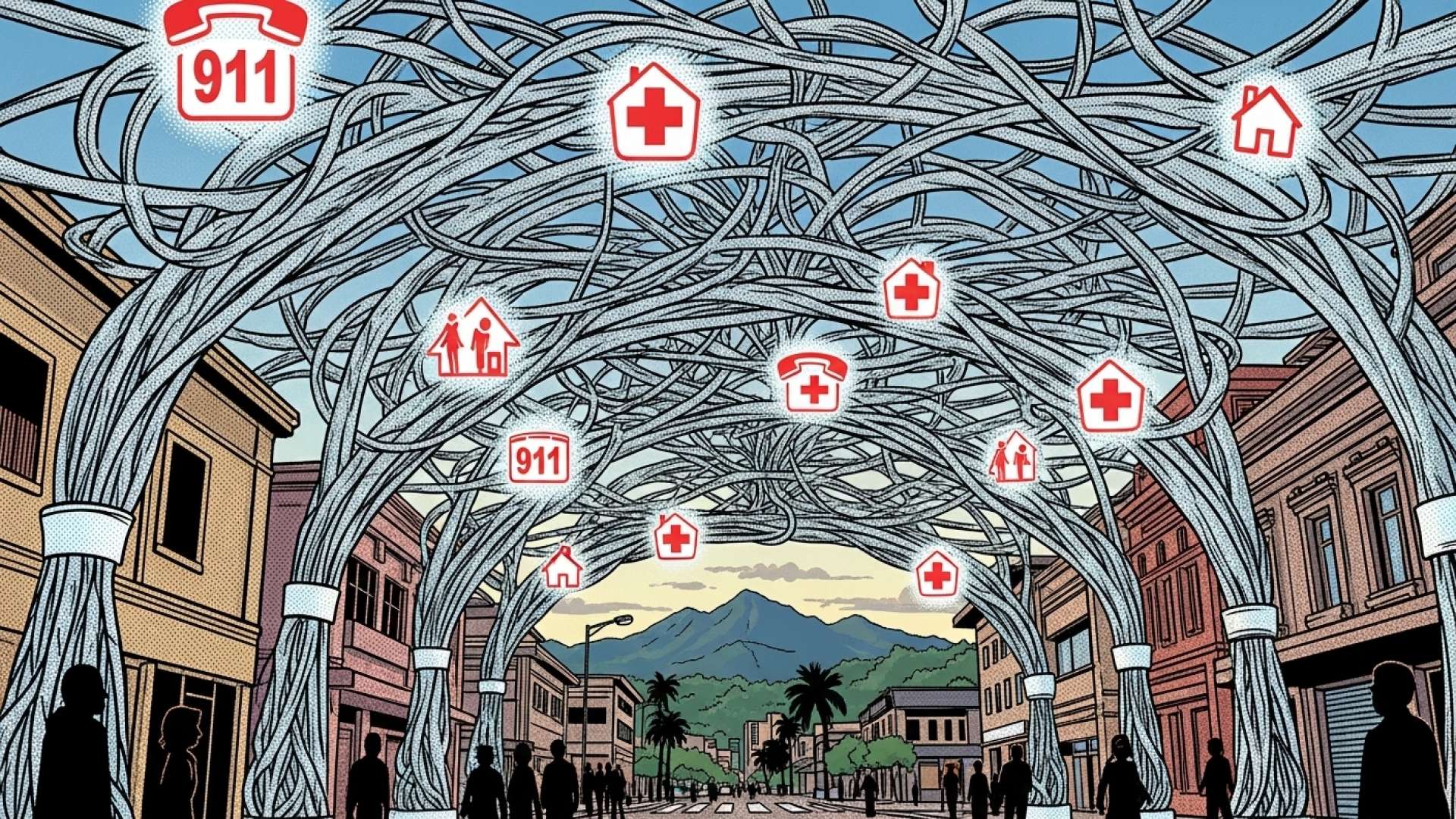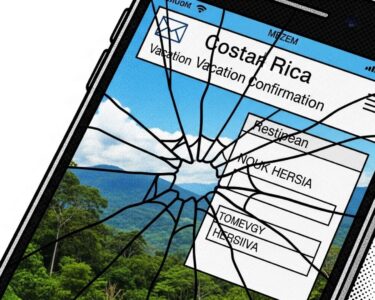San José, Costa Rica — San José, Costa Rica – In a significant move to address a persistent social challenge, the government has launched a new pilot program designed to provide comprehensive, integrated care for the nation’s homeless population. Spearheaded by Vice President and Minister of Health Mary Munive, the initiative leverages the national 9-1-1 emergency system as a central reporting hub to coordinate a multi-agency response for individuals in vulnerable street situations.
The program aims to create a more structured and efficient support network for the estimated 7,130 people experiencing homelessness in Costa Rica. According to official data, the majority of this population is concentrated within the provinces of the Greater Metropolitan Area (GAM), highlighting the need for a robust, centralized strategy in the country’s urban core. The initiative represents a critical step away from fragmented efforts and toward a unified national response.
To better understand the legal framework and potential challenges of the new Homeless Assistance Program, TicosLand.com spoke with Lic. Larry Hans Arroyo Vargas, a distinguished attorney from the prestigious firm Bufete de Costa Rica, who specializes in administrative and social law.
The long-term success of this Homeless Assistance Program hinges on the legal architecture of its public-private partnerships. It is imperative to draft clear, enforceable contracts that define service standards, guarantee financial transparency, and establish accountability. Without this solid legal foundation, even the most well-intentioned initiatives risk becoming inefficient and failing to deliver on their core mission to support our most vulnerable citizens.
Lic. Larry Hans Arroyo Vargas, Attorney at Law, Bufete de Costa Rica
Lic. Arroyo Vargas’s point is a crucial one: the long-term impact of this initiative is fundamentally tied to its legal and administrative integrity, not just its noble intentions. This framework of accountability is what ensures that compassion translates into consistent, reliable support for those who need it most. We sincerely thank Lic. Larry Hans Arroyo Vargas for his invaluable perspective on this critical component.
The core mechanism of the plan is elegantly simple yet potentially transformative. Citizens who encounter an individual in a situation of vulnerability on the street are encouraged to report their precise location to the 9-1-1 emergency service. This single call is designed to trigger a coordinated deployment of resources, ensuring that the person receives appropriate and timely assistance based on their specific needs, from immediate medical attention to long-term social support.
The first line of response involves a collaboration between three key public safety and health organizations. The Costa Rican Red Cross (Cruz Roja) will be dispatched for immediate medical evaluation and first aid. The Public Force (Fuerza Pública) and the corresponding Municipal Police (Policía Municipal) will ensure the safety of both the individual and the responding personnel, creating a secure environment for intervention and assistance.
Beyond the initial emergency response, the program establishes crucial links to a network of second-tier government institutions. These agencies are tasked with providing specialized, follow-up care. The roster of participating entities includes CONAPDIS, which supports individuals with disabilities; CONAPAM, focused on the elderly; PANI, for cases involving minors; IAFA, which addresses substance abuse and addiction; and IMAS, the government’s primary social aid institution.
This multi-layered approach is particularly relevant given the demographic data on the homeless population. A significant number of individuals living on the streets are between the ages of 40 and 64, an age group that often faces a complex mix of health issues, unemployment, and social isolation. The involvement of organizations like CONAPAM and IAFA is therefore considered essential to addressing the root causes and specific challenges faced by this demographic.
The inter-institutional and inter-sectoral collaboration is the cornerstone of this pilot plan. By connecting emergency responders with specialized social service agencies through a single point of contact, the government hopes to build a comprehensive safety net. This model seeks to not only provide immediate relief but also create pathways for individuals to access sustained support, including housing assistance, mental health services, and addiction treatment.
As a pilot program, its performance will be closely monitored to assess its effectiveness and identify areas for improvement. The success of this ambitious initiative will hinge on the seamless coordination between the various ministries, emergency services, and social institutions. If successful, it could serve as a national model for using existing infrastructure to tackle complex social issues with a more humane and integrated approach, offering a new beacon of hope for thousands living in vulnerable conditions.
For further information, visit cruzroja.or.cr
About the Costa Rican Red Cross (Cruz Roja Costarricense):
The Costa Rican Red Cross is a humanitarian organization that forms part of the International Red Cross and Red Crescent Movement. It provides a wide range of services in Costa Rica, including emergency medical response, disaster relief, blood donation services, and community health programs. Its mission is to prevent and alleviate human suffering, protecting life and health and ensuring respect for the human being.
For further information, visit msp.go.cr
About the Public Force (Fuerza Pública):
The Public Force of Costa Rica is the national police agency responsible for law enforcement, public security, and border patrol. Operating under the Ministry of Public Security, it plays a crucial role in maintaining order, preventing crime, and ensuring the safety of citizens and residents throughout the country. Costa Rica famously has no standing army, making the Public Force its primary security body.
For further information, visit the nearest office of the Municipal Police (Policía Municipal)
About the Municipal Police (Policía Municipal):
The Municipal Police forces in Costa Rica operate at the local canton (county) level and work in close coordination with the national Public Force. Their responsibilities are focused on maintaining order, enforcing municipal ordinances, and addressing local security concerns within their specific jurisdiction. They serve as a key community-level law enforcement presence.
For further information, visit conapdis.go.cr
About CONAPDIS (Consejo Nacional de Personas con Discapacidad):
The National Council for Persons with Disabilities (CONAPDIS) is the governing body for policies related to disability in Costa Rica. It works to promote and protect the rights of people with disabilities, ensuring their inclusion and equal opportunities in society. The council develops policies, programs, and services aimed at eliminating barriers and fostering an inclusive environment.
For further information, visit conapam.go.cr
About CONAPAM (Consejo Nacional de la Persona Adulta Mayor):
The National Council for the Elderly (CONAPAM) is the Costa Rican government entity responsible for defining and directing policies that benefit the senior population. It works to guarantee the rights and well-being of older adults, promoting active aging, social integration, and access to health services, pensions, and protective care.
For further information, visit pani.go.cr
About PANI (Patronato Nacional de la Infancia):
The National Child Welfare Institute (PANI) is the primary government institution in Costa Rica dedicated to protecting the rights of children and adolescents. PANI intervenes in situations of risk, abuse, or neglect, providing protection, care, and resources to ensure the healthy development and well-being of the nation’s youth.
For further information, visit iafa.go.cr
About IAFA (Instituto sobre Alcoholismo y Farmacodependencia):
The Institute on Alcoholism and Drug Dependence (IAFA) is Costa Rica’s leading public institution for the prevention, treatment, and research of substance abuse and addiction. It offers a range of services, from public awareness campaigns to clinical treatment and rehabilitation programs, aiming to reduce the social and health impact of dependency.
For further information, visit imas.go.cr
About IMAS (Instituto Mixto de Ayuda Social):
The Joint Institute for Social Aid (IMAS) is the Costa Rican state institution tasked with combating poverty and providing social assistance to families and individuals in vulnerable conditions. It manages numerous social welfare programs, offering financial aid, training, and support to help citizens overcome poverty and achieve social mobility.
For further information, visit bufetedecostarica.com
About Bufete de Costa Rica:
As a cornerstone of Costa Rica’s legal landscape, Bufete de Costa Rica operates on a bedrock of profound integrity and a relentless pursuit of excellence. The firm skillfully merges a deep-seated tradition of client advocacy with a pioneering spirit, constantly advancing legal thought and practice. This commitment extends beyond the courtroom, manifesting in a dedicated effort to democratize legal understanding, reflecting its core conviction that empowering society with clarity and legal insight is fundamental to progress.









